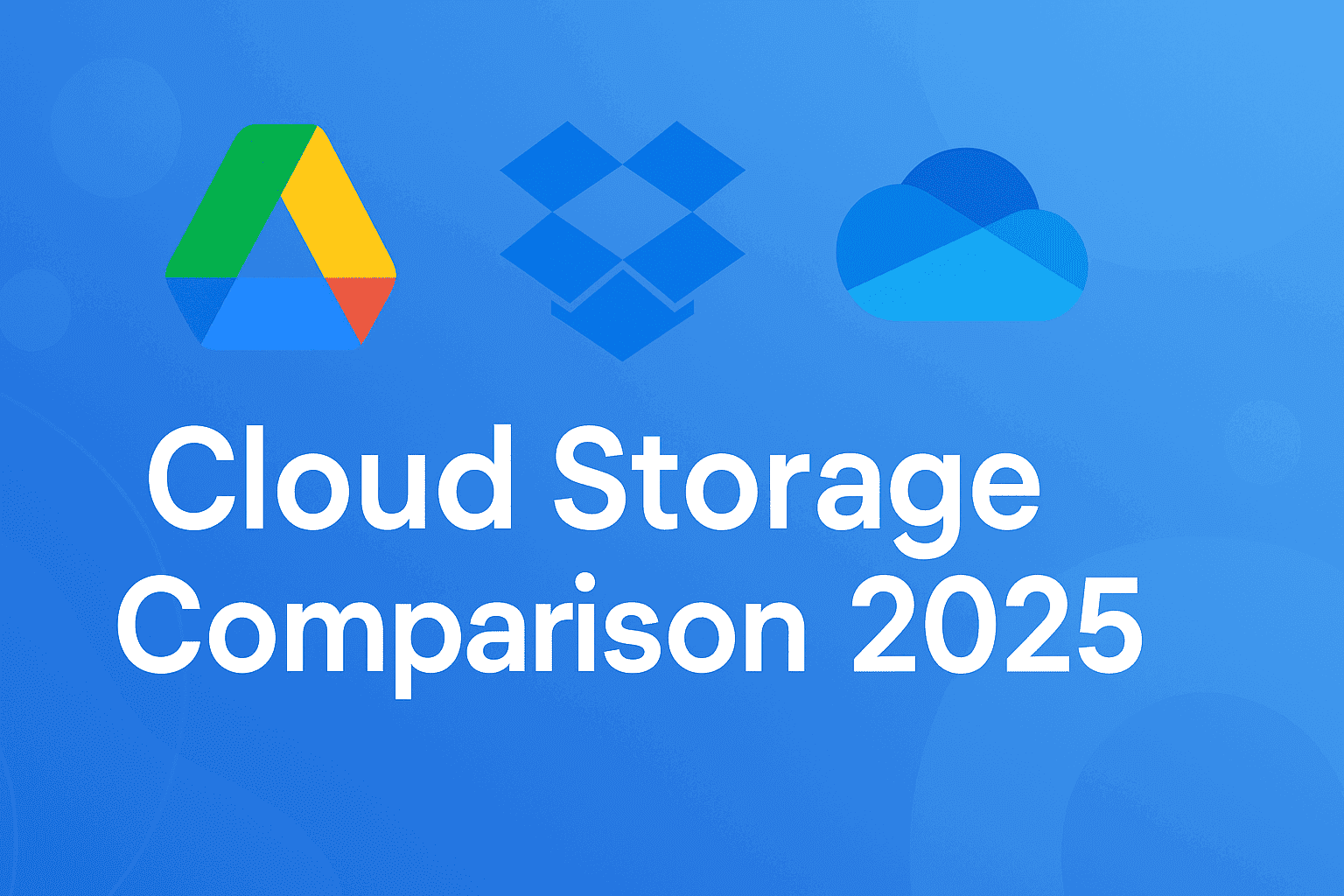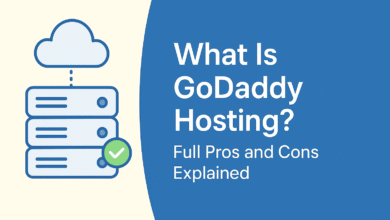Cloud Storage Comparison 2025: Google Drive vs Dropbox vs OneDrive – Full Guide

Introduction
Cloud storage has become an essential tool for individuals, students, and businesses in today’s digital world. It allows users to store, sync, and share files online, making data accessible from anywhere, on any device. Among the most popular cloud storage providers are Google Drive, Dropbox, and OneDrive.
In this article, we will compare these three services in terms of storage capacity, pricing, performance, security, features, and ease of use, to help you choose the best one for your needs.
1. Overview of Each Service
Google Drive
Google Drive is a cloud storage service developed by Google. It’s integrated with Google Workspace (Docs, Sheets, Gmail, etc.), making it ideal for collaboration.
Launched: 2012
Free Storage: 15 GB (shared with Gmail and Google Photos)
Best For: Google ecosystem users, collaboration, productivity.
Dropbox
Dropbox is one of the pioneers of cloud storage. Known for its simplicity and powerful file synchronization, it’s a favorite for professionals who need reliable file sharing.
Launched: 2007
Free Storage: 2 GB
Best For: File syncing, third-party integrations, professional workflows.
OneDrive
OneDrive is Microsoft’s cloud storage platform, deeply integrated with Microsoft 365 (Word, Excel, PowerPoint).
Launched: 2007
Free Storage: 5 GB
Best For: Microsoft Office users, Windows integration, corporate environments.
2. Storage and Pricing Plans (2025)
| Service | Free Plan | Paid Plans | Max Storage | Special Notes |
|---|---|---|---|---|
| Google Drive | 15 GB | 100 GB: $1.99/mo 2 TB: $9.99/mo | Up to 30 TB | Shared with Gmail & Photos |
| Dropbox | 2 GB | Plus (2 TB): $9.99/mo Professional (3 TB): $16.58/mo | Unlimited (Business plans) | Strong sync features |
| OneDrive | 5 GB | 100 GB: $1.99/mo Microsoft 365 Personal (1 TB): $6.99/mo | 6 TB (Family plan) | Includes Office apps |
3. File Sync and Sharing
Google Drive: Seamless collaboration on Google Docs, Sheets, Slides. Real-time editing.
Dropbox: Extremely fast sync using block-level file copying (only changes upload).
OneDrive: Perfect integration with Windows File Explorer and Microsoft Office apps.
4. Security and Privacy
| Feature | Google Drive | Dropbox | OneDrive |
|---|---|---|---|
| Encryption | AES 256-bit at rest, TLS in transit | AES 256-bit at rest, SSL/TLS in transit | AES 256-bit at rest, SSL/TLS in transit |
| Two-Factor Authentication | Yes | Yes | Yes |
| Zero-Knowledge Encryption | No | No | No |
| Compliance | GDPR, ISO 27017, SOC 2 | GDPR, ISO 27018, SOC 2 | GDPR, ISO 27001, HIPAA |
5. Ease of Use and Interface
Google Drive: Clean interface, best for Gmail & Android users.
Dropbox: Minimalist UI, quick file sharing.
OneDrive: Integrated into Windows 10/11, easy drag-and-drop.
6. Performance and Reliability
Google Drive: Reliable, but sync speed depends on internet.
Dropbox: Industry-leading sync speed and accuracy.
OneDrive: Excellent for Microsoft users, but sometimes slower on Mac.
7. Integrations and Extra Features
Google Drive: Google Workspace, 1000+ third-party apps.
Dropbox: Slack, Zoom, Trello, Adobe integration.
OneDrive: Microsoft Teams, SharePoint, Outlook.
8. Pros and Cons
Google Drive
✅ Large free storage (15 GB)
✅ Best collaboration tools
❌ Storage shared with Gmail & Photos
Dropbox
✅ Fastest file sync
✅ Strong third-party integrations
❌ Small free plan (2 GB)
OneDrive
✅ Includes Microsoft Office in paid plans
✅ Seamless Windows integration
❌ Only 5 GB free
9. Which One Should You Choose?
Choose Google Drive if you’re heavily invested in Google’s ecosystem and need strong collaboration tools.
Choose Dropbox if you need fast, reliable syncing and work with many third-party apps.
Choose OneDrive if you use Microsoft Office regularly and want everything integrated.
Conclusion
Cloud storage is no longer a luxury—it’s a necessity. The right choice depends on your ecosystem, budget, and storage needs. Google Drive is perfect for collaboration, Dropbox for speed and professional file management, and OneDrive for Microsoft Office users.
No matter which you choose, having a cloud backup ensures your files are safe, accessible, and easy to share.
![Best URL Shortener Sites to Earn Money Online in 2025 [High CPM] 22 Best URL shortener sites 2025 with high CPM to earn money online](https://techniai7.com/wp-content/uploads/2025/09/ChatGPT-Image-8-سبتمبر-2025،-10_42_49-م-1-390x220.png)



